The other week fellow transport Philip Mallis raised an interesting question – would the average Melbournian know what a ‘City Circle’ train is, if they were told to catch one?
The back story
The City Loop encircles the Melbourne CBD, with train services from different lines taking different routes around it at different times of day, before finally arriving at Flinders Street.
And because the loop consists of four independent tunnels, train services can continue running on one line while another one is closed.
But what about passengers on the line which isn’t running through the City Loop?
Answer – they catch a “Train Replacement Train”.
Confusion abounds
These “train replacement trains” start at Flinders Street, then visit Southern Cross, Flagstaff, Melbourne Central and Parliament, before arriving back at Flinders Street.
Screens on the concourse at City Loop stations call this replacement service the “City Circle”.
But the screens at platform level call them a ‘Flinders Street’ train.
And the trains running these services just show ‘Special’ on the front.
While back at Flinders Street Station, it’s called a ‘City Loop’ train.
Confused?
Enter the ‘City Circle’
With four independent tunnels in the City Loop looping around the CBD, each one needed a name.
Based on which train lines they are connected to.
- Northern Loop – serving the lines through North Melbourne,
- Burnley Loop – serving the lines headed towards Burnley,
- Caulfield Loop – serving the lines headed towards Caulfield, and finally
- Clifton Hill Loop / City Circle – serving the lines towards Clifton Hill, along with a branch back to Flinders Street.
The Clifton Hill / City Circle name can be seen on tunnel walls.
And on emergency exit signage.
The most interesting feature of the Clifton Hill / City Circle tunnel is an underground junction, located just south of Parliament station – a popular spot for urban explorers before security was upgraded.
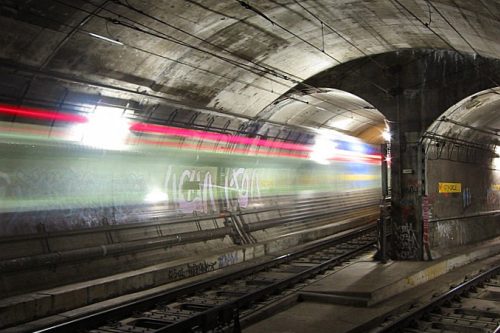
To avoid any unwanted attention I’m not going to link back to the original photographer
The other end of the tunnel is located beneath the Exhibition Street bridge.
My only photo of the junction was taken hanging out of the open window of a Hitachi train, packing a high powered flashgun.
But I recently made a special expedition to the portal to capture it in use.
And after a loud TOOT an X’Trapolis train emerged from underground.
Headed up the ramp bound for Flinders Street Station.
Footnote: some photos from the past
Until August 1993 the ‘City Circle’ service operated full time to provide cross-CBD travel, until it was replaced by the newly-introduced free City Circle Tram service at ground level.
But City Circle trains still ran as required for operational reasons – I stumbled upon one at Flinders Street platform 1 back in 2005, advertised as a ‘City Circle’ service on the old CRT next train display system.
And took one for a ride in 2012, with the displays onboard the train calling it a ‘City Circle train’.
So that’s great progress in the past decade – going from consistent ‘City Circle’ messaging towards passengers, to a mix of ‘City Circle, ‘Flinders Street’, and ‘Special’.
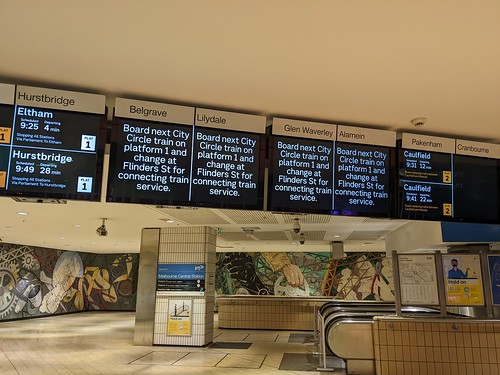
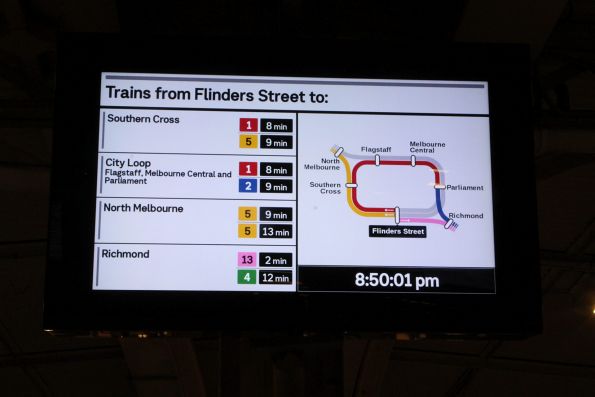
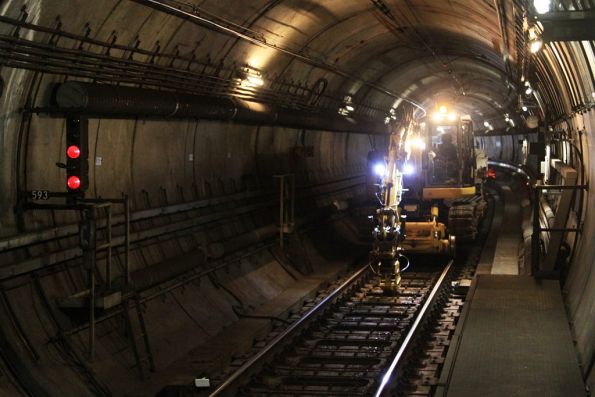
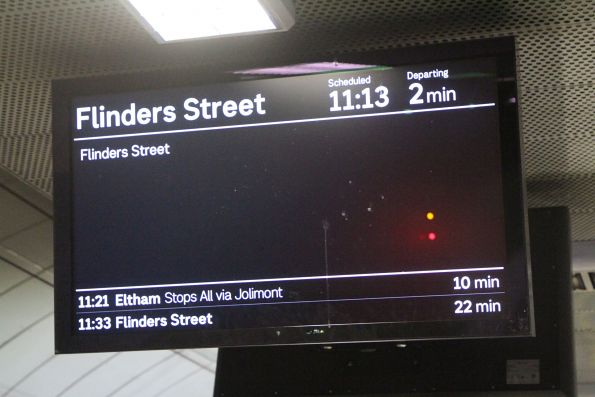
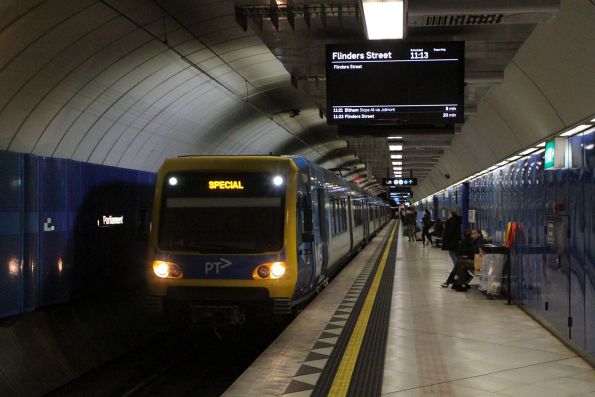
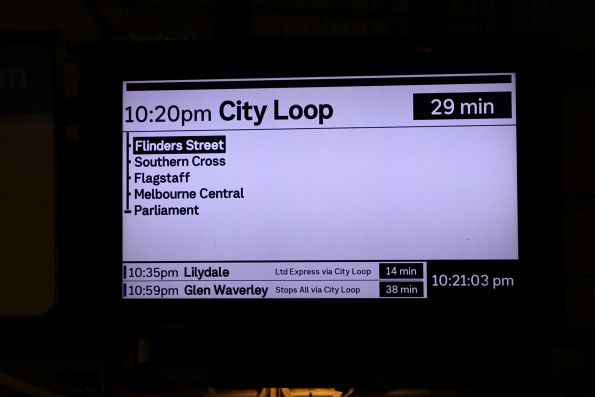
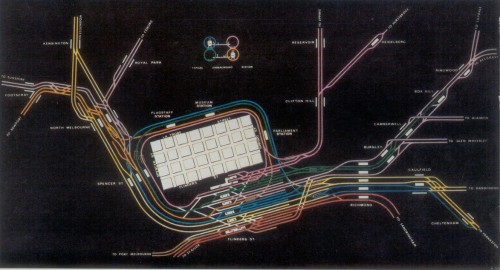
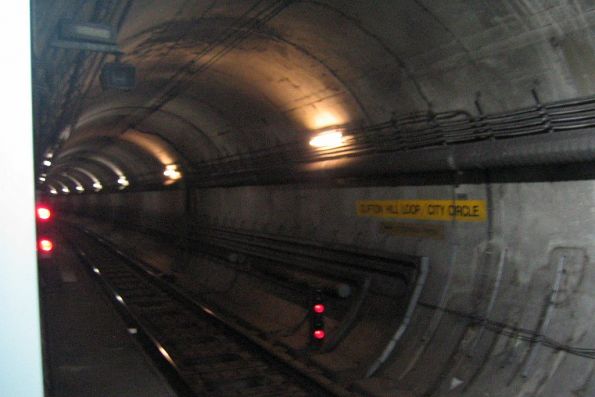
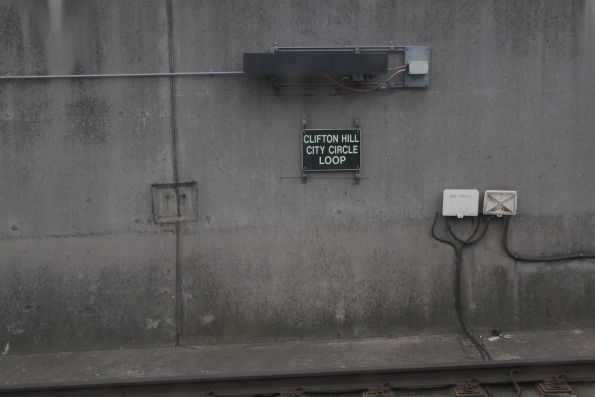
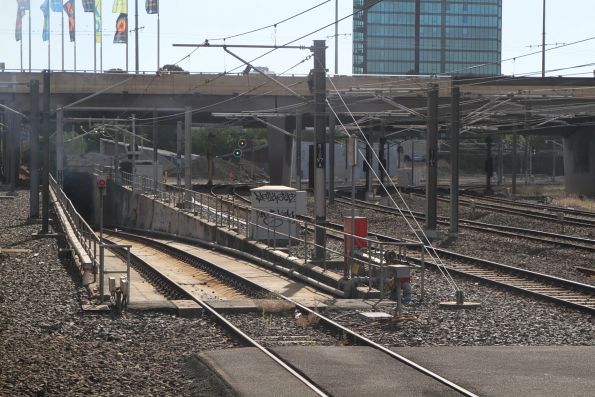
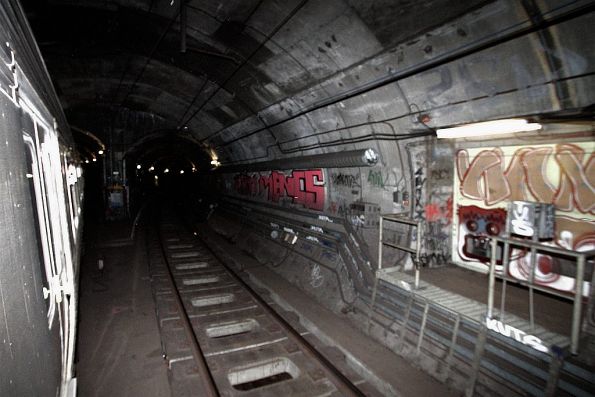
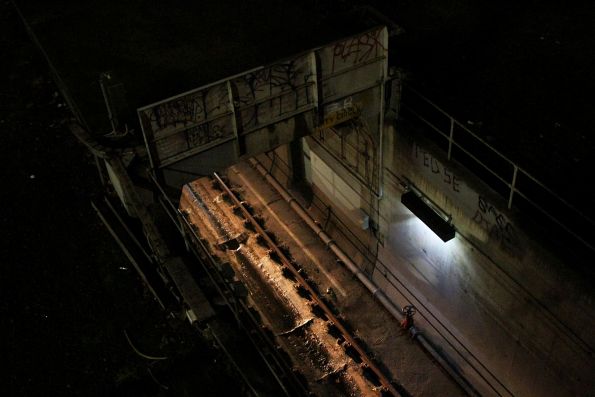
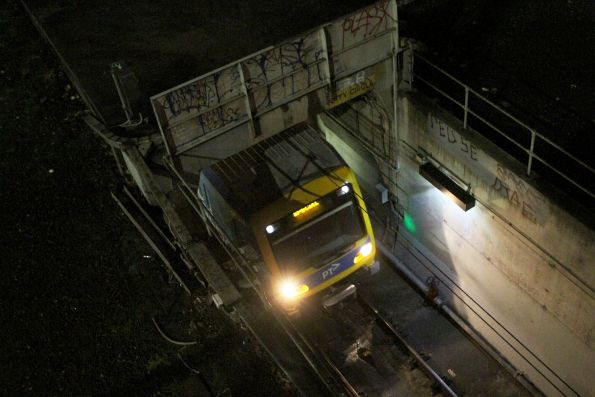
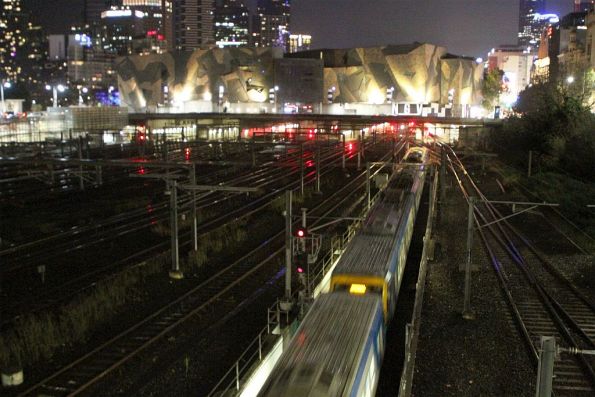
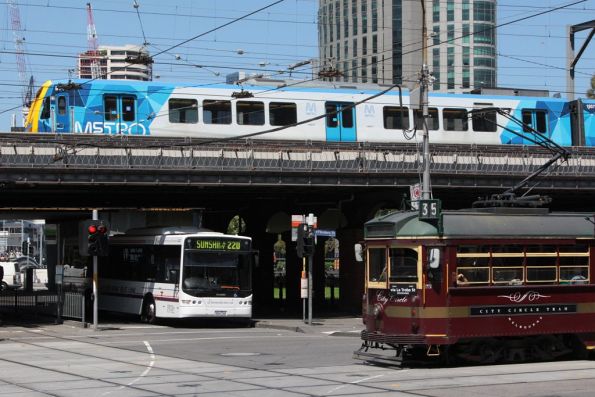
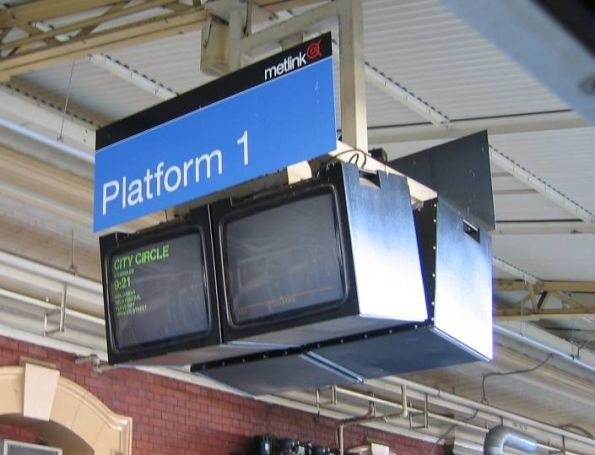
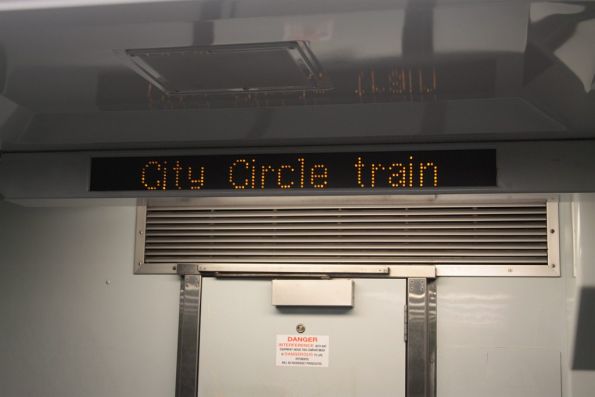

One correction to a claim that I often see made – the City Circle Tram was not a direct replacement
City Circle trains ended on 21 August 1993, a cost saving measure by Kennett Government
City Circle trams didn’t commence until 29 April 1994, 8 months later
The original City Circle train timetable was a hard-to-remember 24 min frequency between the peaks, little use for spontaneous trips around the CBD
In 1989 it was upgraded to every 10 mins along with Epping & Hurstbridge Lines upgrades but arguably too late to catch on
Thanks for the clarification – the “City Circle Tram was a replacement” claim came from the old City Loop history page the Department of Infrastructure put up 10+ years ago.
It’d be interesting to see what Hansard and contemporary newspapers had to say on the withdrawal of the service.
The City Circle train was the only way to get from the underground stations to Flinders/Spencer Sts in the afternoon, and vice versa in the morning – other than that it probably had limited utility as you could travel between Flagstaff, Museum and Parliament in both directions on normal trains.
I think from memory how it basically ran was a Epping/Hurstbridge arrival at Flinders Street would effectively do two circuits of the underground before heading back out to Epping/Hurstbridge. Presumably when it was cut the existing Epping/Hurstbridge service could be run with fewer trains.
Funny that the electronic signage can’t cope with it.
Does Metro occasionally need to run trains that way between Flinders Street and Parliament to keep the line operational?
It was a single circuit, at least off peak. An Epping train would arrive at platform 14, do a City Circle service, then form a Hurstbridge line service. Ditto, a Hurstbridge line service would arrive at platform 14, do a single City Circle service then depart for Epping. In the peak hour there would be a limited number of City Circle services running very infrequently to the point of presumably only being for operational purposes, much as they are now. The last City Circle was just after 7pm on weekdays from memory, with no City Circle services in the evening. Pretty sure Saturday trains were much the same but without the peak variant. In those days the City Loop wasn’t open Sundays so obviously no City Circle trains, although I always wondered about an odd anomaly in the original 1982 timetable which did have a couple of trains late Sunday afternoon going via the loop. These were gone by the 10 June 1984 timetable.
I’m curious about the destination “city circle” because i have a feeling it pre dates the loop. The original “city circle” ran in a circle departing flinders street/ stopping at spencer st/-nth Melbourne/Royal Park/Carlton/Fitzroy/Rushall/Clifton Hill/Victoria Park/Collingwood/West Richmond / -return to flinders. (also known as inner circle) The red rattler vintage red trains (Tait trains) have city circle on their destination blinds (and they were on the rails 1920s-1980’s ! 🙂
I don’t believe the ‘City Circle’ name was ever applied to trains running around the Inner Circle – and the trains that did use the line never completed a full circle, they originated in the city and headed to Fitzroy, North Carlton, Heidelberg or Whittlesea.
https://en.wikipedia.org/wiki/Inner_Circle_railway_line
That maybe correct. Is there anyone old enough to remember hehe. I think Fitzroy might have been a destination in the steam train era but not electrified. Nth Carlton was in early 1900s as per photo. According to Wiki the trains terminated at Victoria Park before a reverse run to Heidelberg (all predating the current Mernda line) this explains all the excess land next to Vic Park station and the remnants of of old overhead cable frames. Thanks 🙂
Also note that the destination blinds on the Tait trains had locations added and removed over the years.
https://collections.museumsvictoria.com.au/items/247966
And the announcements say stopping all stations to Parliament instead of stopping all stations to FSS…
The only way that the City Circle track connecting Flinders St and Parliament would have been widely useful would be if the following thing had also happened:
The Museum/Melbourne Central to Clifton Hill via Fitzroy tunnel had been built.
A corresponding Clifton Hill to Parliament tunnel via Fitzroy had been built.
This early City Loop diagram shows the proposed single track connection to Victoria Park.
https://www.reddit.com/r/MelbourneTrains/comments/fxj5kt/old_plans_for_the_city_loop/
This map from the 1969 Melbourne Transportation Plan has the proposed tunnel with proposed Fitzroy station location and proposed connections Clifton Hill and the proposed East Doncaster line:
https://prov.vic.gov.au/sites/default/files/files/Blog/Research/1969-Transport-Plan-LOOP%20web.jpg
Occasionally recorded in-train announcements when approaching Richmond on a train from the Frankston line inform us to change at Richmond for (amongst all the other lines) “City Circle” trains. They mean “City Loop” of course. I’m not sure, but I think this is limited to some of the Comeng trains. It’s in the same category as the announcements at Richmond telling us that the train is “stopping all stations to Flinders St”.
Thanks for this. I got to FSS yesterday (04.02.23) and saw a City Loop train signed, so out of interest rode it all the way round back to FSS. I knew such a service existed the early days of the loop but don’t previously recall seeing it in my 14 years here.